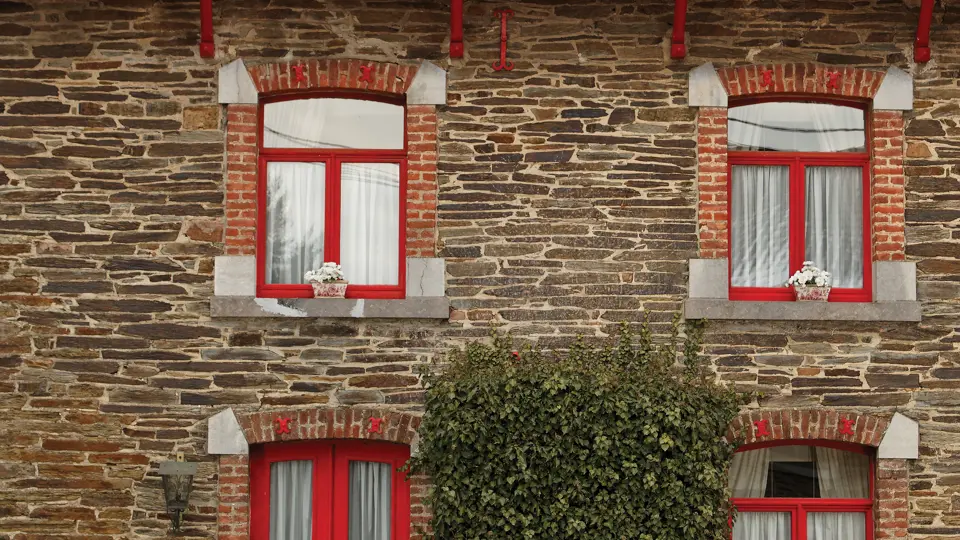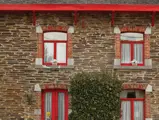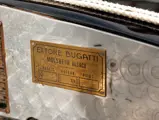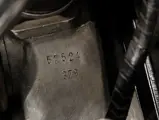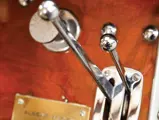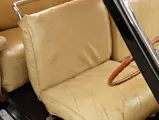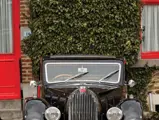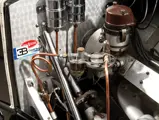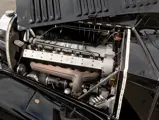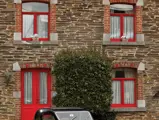135 bhp, 3,257 cc twin-cam inline eight-cylinder engine, four-speed manual transmission, live front axle with semi-elliptic leaf springs, live rear axle with inverted quarter-elliptic leaf springs, and four-wheel cable-operated drum brakes. Wheelbase: 3,300 mm (130 in.)
The two-door Ventoux was one of four body designs offered at the time of the Bugatti Type 57’s launch, and it was the creation of Ettore Bugatti’s much-lauded designer son, Jean. The four-seat, two-door design was distinctive for its heavily raked windscreen and elegant proportions, and it was offered in four distinctive series during its production.
The car offered here, manufactured 12 March 1937, with chassis number 57524 and engine number 379, was the 99th Ventoux built of 164 produced, as part of the third series, and it is the only example to feature the distinctive “teardrop” tail, beautifully in keeping with the sporting character of the model. It was delivered to Bugatti’s dealer in Lille, France, Crequy et Cornette, as a show car, specifically for display at the Lille Fair. On 14 April, it was acquired by its first owner, Etienne Pollet-Beghin, who registered it as 2539 MD 3 in the Nord region.
The Ventoux passed in 1939 to Marcel Heyndrick and then, in April 1940, to Albert Meyer. It was re-registered in 1956 as 2713 EW 75, and about a year later, it was exported to Belgium by the legendary Jean De Dobbeleer, as pictured in the book The Bugattis of Jean De Dobbeleer by Charles Fawcett. At around this time, its identity had been swapped, and the car was renumbered 57422, by a change of chassis plates and having the engine numbers restamped as 57422 and 310, respectively, changing only the last digits. This was probably done for tax reasons, before it’s exportation to South Africa, where it was a part of the Wilworth Collection, as recorded in Hugh Conway’s Bugatti Register of 1962. It returned to Belgium in 1981, in the hands of Ennio Gianaroli, and then, in 2006, it passed to Albert Lemaire.
Importantly, the car’s original number stamping was still present under the new number, and the car never lost its original engine, as can be seen on inspection. The renumbering was corrected, and today, the car wears its original number and is completely, totally accurate and numbers-matching once again, as certified by the British Bugatti Owners Club and by respected Bugatti historians, Pierre Yves Laugier and David Sewell. The rear axle, front axle, and gearbox all bear the correct number, 379. The present owner, who purchased the car in 2010, undertook an overall restoration, which is well documented: The body has been stripped down to bare metal, lead metal-finished, and then painted back to black, as it was when delivered new. The mechanical components have been well-restored overall, and the present owner has enjoyed the elegant Ventoux, driving it in some rallies.
Today, this Bugatti is an outstanding example of this highly desirable model, and with its unique body design, exceptional originality, and verified matching numbers, it is a rare opportunity for any discerning collector.




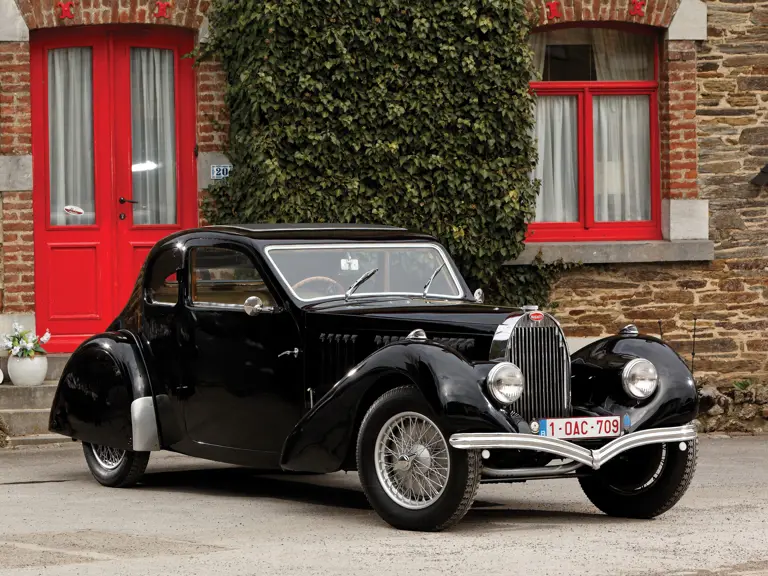
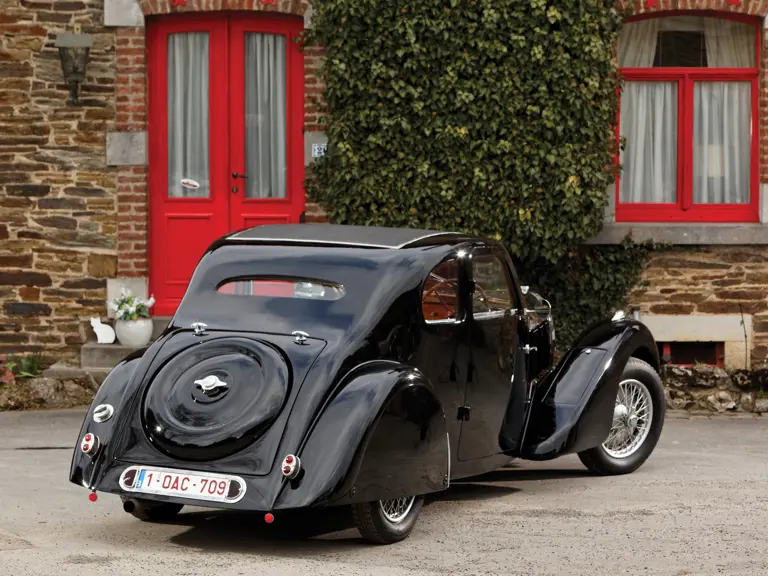
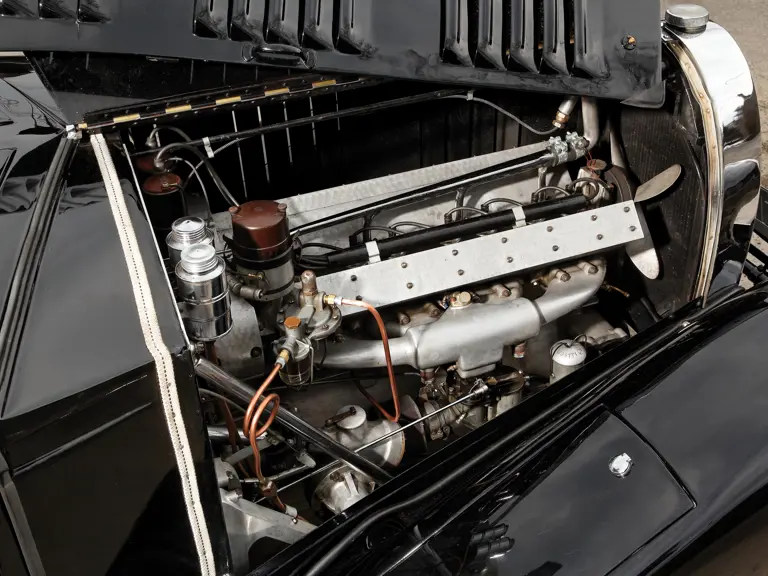
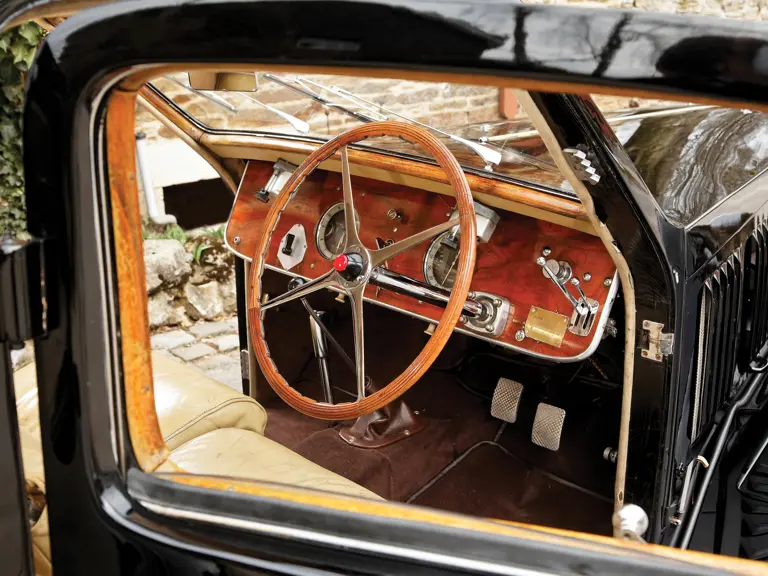


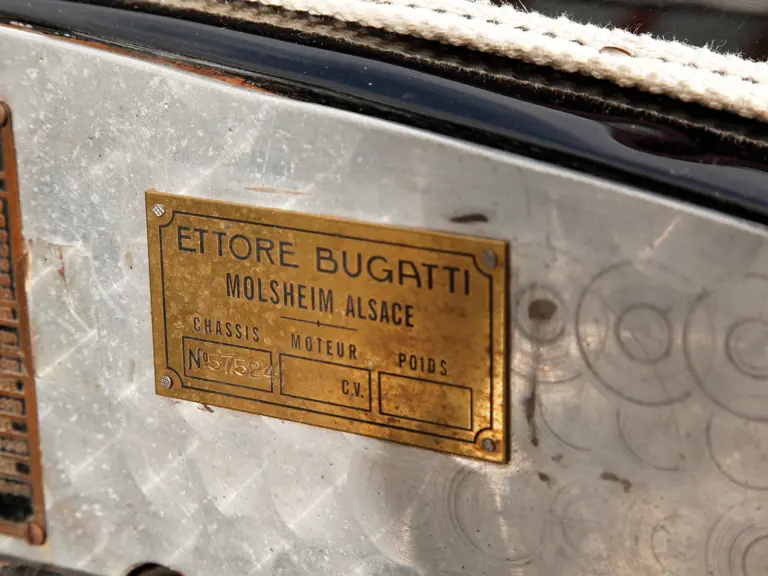
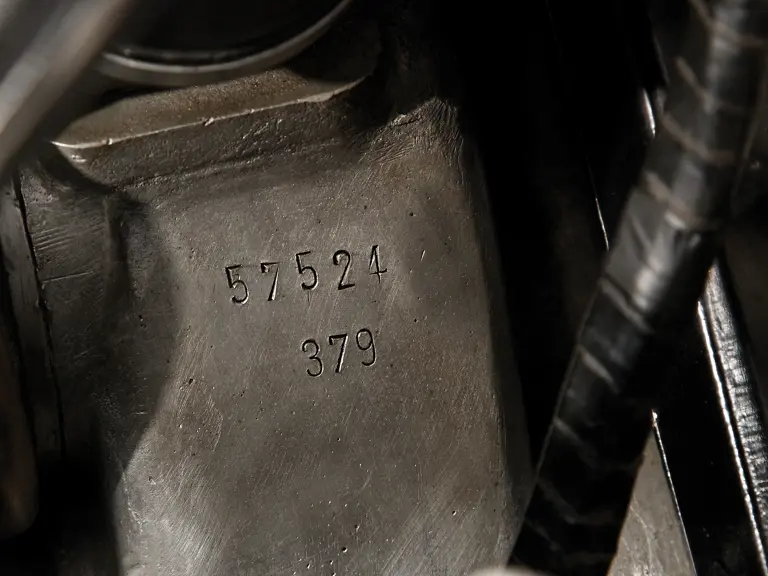
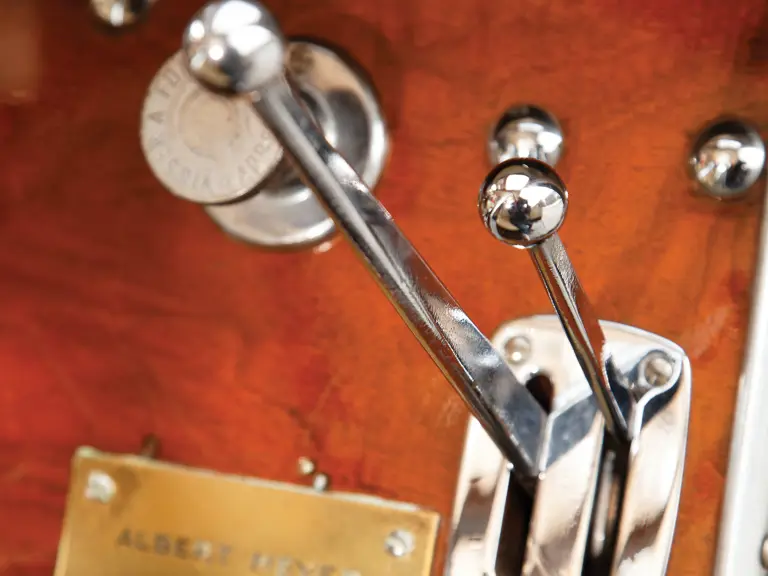
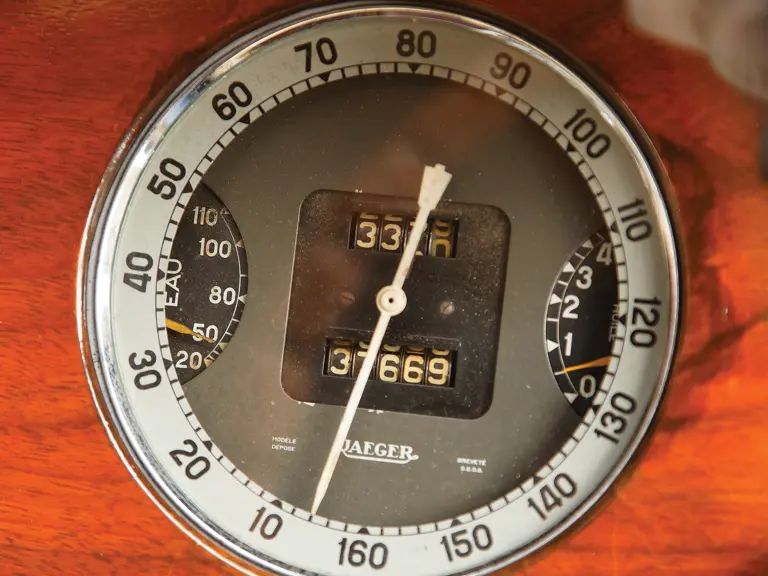

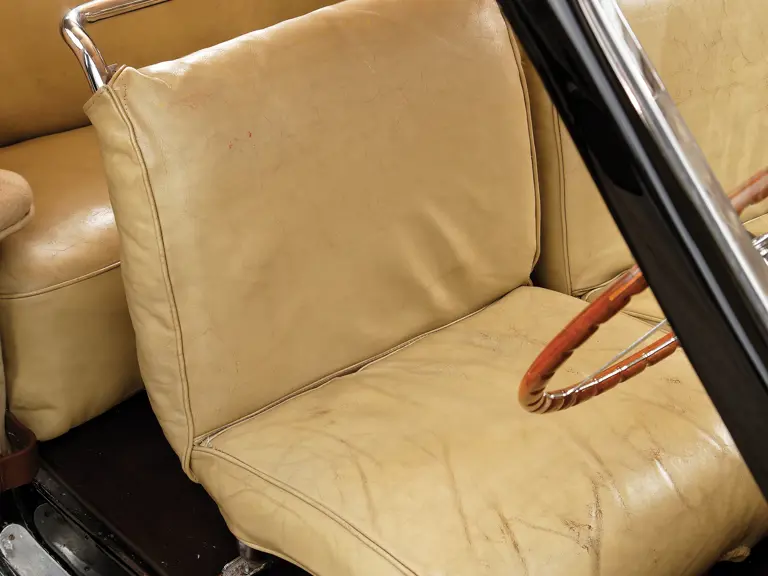
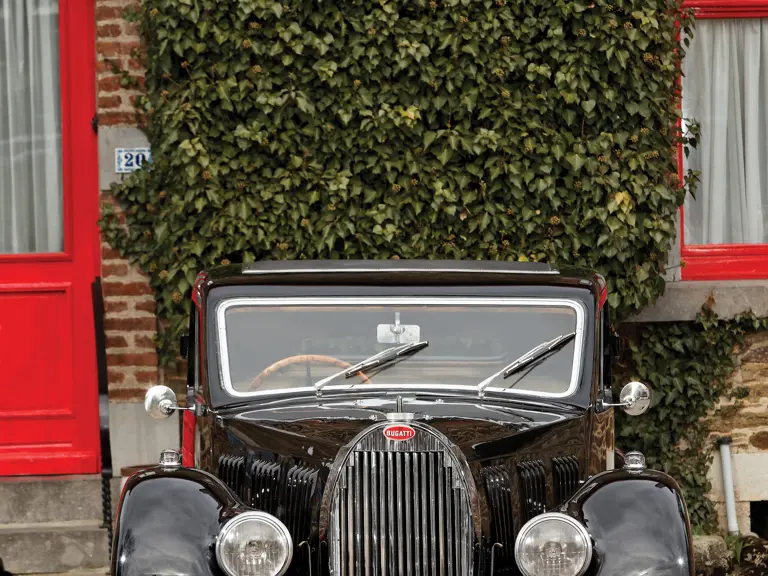
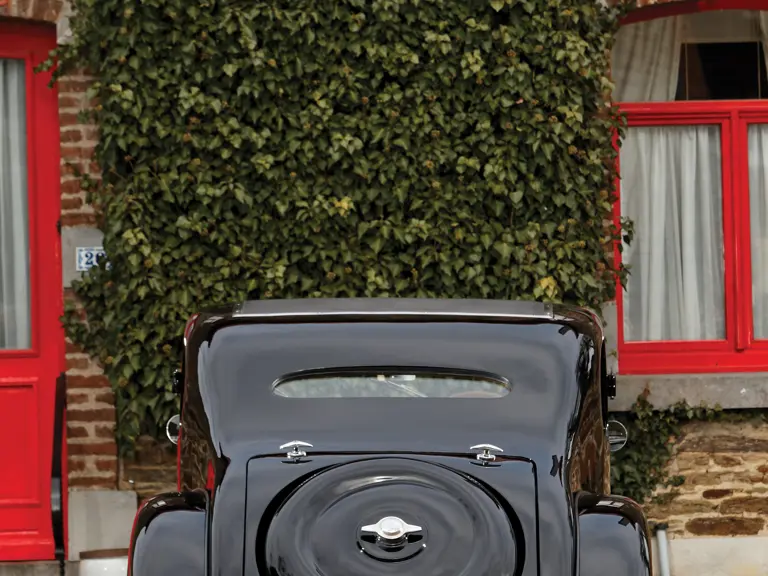
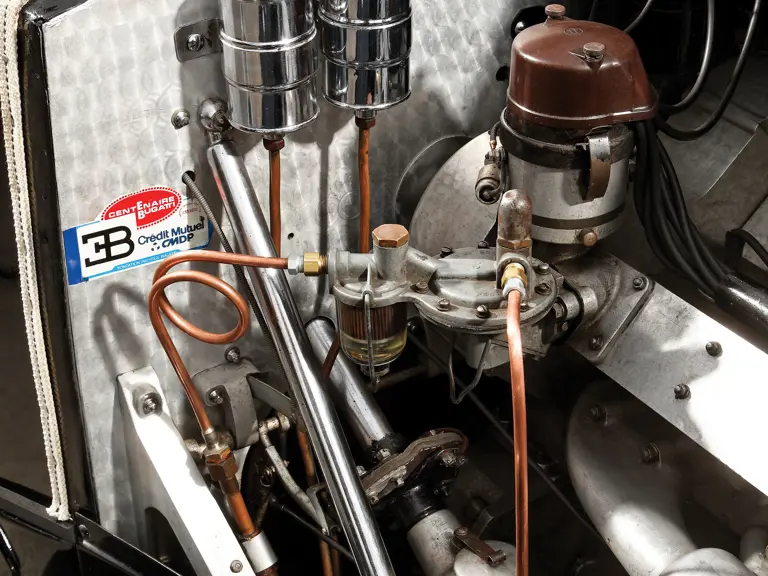
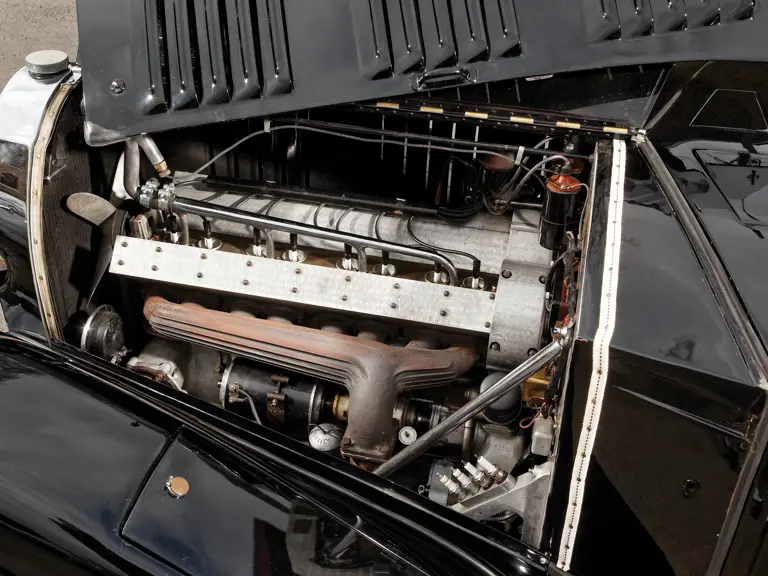
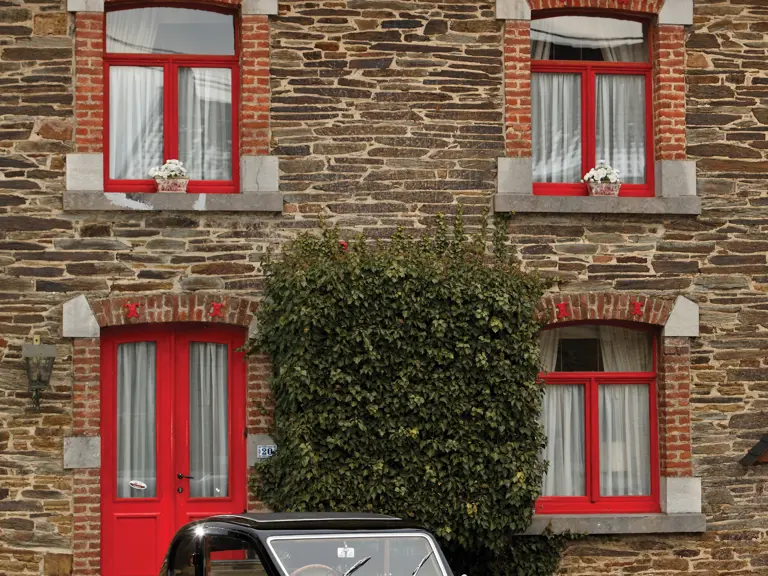
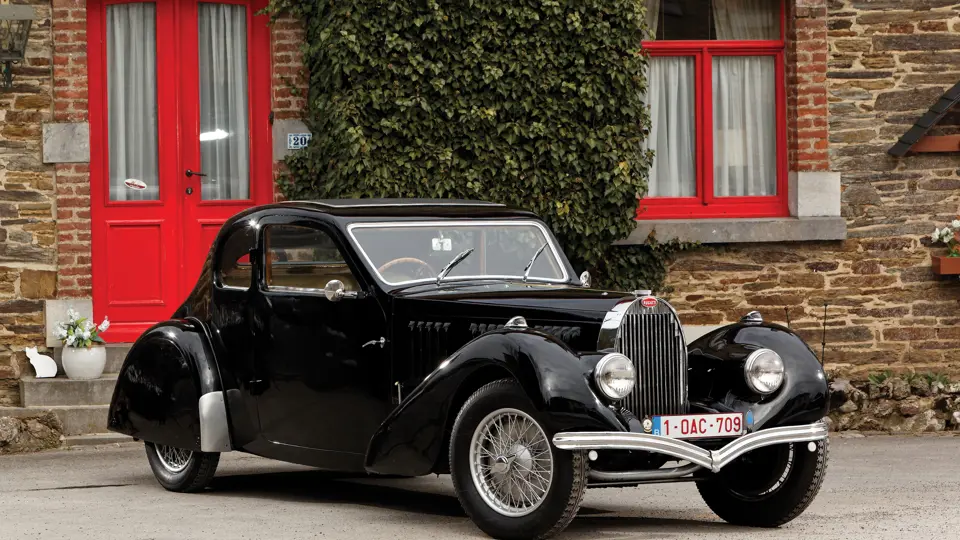
 | Cernobbio, Italy
| Cernobbio, Italy
